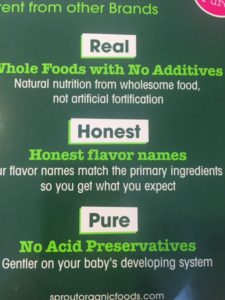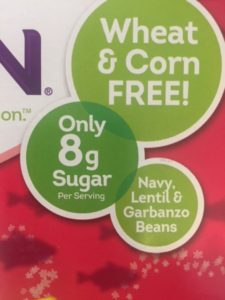I absolutely love the fitness and nutrition industry and am so glad I have chosen it for my career, however, one of the things I love the most about it, I also hate about it. This industry is constantly changing. And by constantly, I mean every few months there seems to be new diet and exercise fads or trends. I assume other industries, though maybe advancing in technology and a few other areas are not changing as rapidly as fitness and nutrition. This does keep me constantly challenged, researching and trying new things for myself, my clients and my class participants but it is frustrating to constantly having to ‘debunk’ ridiculous fads that people read about online. Consumers are overloaded by media constantly in nutrition and exercise so they are often confused on how they feel they should be exercising and eating. Again, this does not happen in many other industries. You do not hear commercials or most likely read articles on the latest craze sweeping the dental industry or likely see a social media post on how ACL surgery has changed and therefore mention this to your doctor the next time you see them. I am constantly trying to help my clients decode what they have read or answering questions about the latest magic weight loss shake their neighbor is drinking and often selling.
Fads, which are short-lived are fads for a reason. The Cookie Diet, Raw-Food Diet, Alkaline Diet, Blood-Type Diet were all fads because they were unsustainable, didn’t yield the results promised or in my opinion, just quite ridiculous. Trends, which tend to have a much longer lifespan than fads can often have more of an impact on the market. Though I do not believe in solely following any fad or trend as I do not think there is only one way to eat, I recently read an article listing some of the current nutrition trends that I agree with and support.
- Relaxing Cholesterol restrictions YES! YES! It pains me to see someone only eat egg whites when most of the nutrients are in the yolks! The cholesterol in our blood stream is not directly related to the cholesterol that we eat. The 2015 Dietary Guidelines Advisory Committee (DGAC) states, “available evidence shows no appreciable relationship between consumption of dietary cholesterol and serum cholesterol … Cholesterol is not a nutrient of concern for overconsumption.” This is crazy since we were told for so many years to watch our intake of cholesterol. There are still questions on exactly how much cholesterol is too much and how this might affect risk for coronary heart disease and diabetes. Someone can still have unhealthy levels of cholesterol but this might not be as directly related to diet as once thought. Lifestyle and genetics play a significant role as well.
- Souping- Souping, just as it sounds, eating soups and soup like dishes is looking to replace the juice trend of a few years ago. Juicing, though encouraged consumption of fruits and vegetables, removes the fiber which has significant benefits. Dessert soups, breakfast soups (aka smoothie bowls) are being sold in go-to-jars. I am in favor of anything that encourages people to consume more vegetables. As always, I would just caution to read labels for any questionable additives. Luckily, soups and smoothies are SUPER easy to make at home.
- More Products with Less Sugar- I have such a sweet tooth but sugar can wreak so much havoc on your body and unfortunately it is in everything! Though I like having some type of small sweet after dinner, I really try to watch my sugar intake elsewhere (salad dressings, drinks, etc.) I also really try to manage my kids’ sugar intake. This can be really challenging with children as most children prefer sweet over any other taste and therefore the majority of food marketed for children are loaded with sugar. I am happy to see many companies attempting to reduce the sugar in their products and/or use more natural sweeteners (though many will argue natural sweeteners are metabolized in the same way as refined sugar). We have become so accustomed to eating everything overly sweet (and often salty) that we probably do not realize that many foods (ex: yogurts, breads, condiments) could have half as much sugar and still taste good. We need to re-train our taste buds.
- Managing Food Waste-Though not specific to nutrition, this one is important to me. I feel that I am pretty environmentally conscious but one of my biggest pet peeves is food waste. This has been exemplified by having a toddler who SWEARS he wants a turkey and cheese sandwich and once that has been served he actually meant a peanut butter and jelly sandwich. AAAHH! In my house that basically means he will get that turkey and cheese sandwich the following day. I am super happy to see this as a trend. 40-60% of food in our home is thrown out!!! Crazy! This number is probably higher in households with toddlers 🙂 And “one-half of all the food in the United States is wasted farm to fork” states Andrew Shakman, food waste prevention advocate and cofounder of LeanPath. What is even more confounding is that there 870 million hungry people on this planet. So many people think there is a shortage of food, which is really not true, it is just not distributed correctly. So I am very happy to see this becoming a real issue and books and media coverage and pushes for us to reduce waste in home, restaurants, and hospitals.
The other trends listed in this article included probiotics, full fat dairy, sprouted grains, and a renewed push for protein and though I do like all of these trends, I do feel that most of them have been trending for quite some time.
Other trends emerging that I am fan of:
- Pulses: Pulses are lentils, dry beans, beans, and chickpeas. The United Nations is attempting to heighten public awareness of the nutritional benefits of pulses as part of sustainable food production, aimed towards food security and nutrition.
- Artificial: Consumer demands for natural and “less processed” food and drink are forcing companies to remove artificial ingredients. Related to this is a “Less Is More” philosophy. Food manufacturers will have to continue to make food products that are less processed as consumers demand more transparency and foods that are closer to their natural state.

- Fat Sheds Stigma: This is similar to the change in the viewpoint on cholesterol. Consumers’ awareness of good and bad fats is pushing a paradigm shift in which fat content is not the first and foremost consideration in the search for healthy products. I am a big fan of this as I think fat should be chosen over sugar.
- Organic Growth for Clear Label: “Clear label” established itself as a key trend in 2015, with greater transparency and the focus on simpler products with fewer artificial additives.
Other food trends that I am not sure I am on board with yet:
- Savory yogurt: Not so much. Just makes me think of baby food.
- Genetically engineered meat: All I can say is no. Though this is an attempt to find a better way to produce meat, I am not sure this is the solution.
- Wine in a can: Not sure how I feel about this, I will need to do some extensive taste testing on this one. 🙂
I am happy to see our society caring more about what’s in their food, wanting less processed food and realizing what a profound impact food can have on our overall wellbeing. However, regardless of what is trending, my philosophy is still eating lots of vegetables, good quality protein and dairy (if this works for your digestive system) moderate amounts of fruit and grains and finding what foods feel good in YOUR body.
Are there any trends you are loving or following right now? As always, I would love to hear from you.
To subscribe to my monthly newsletter with more fitness and nutrition tips for you and your whole family, sign up here!
Resources:
- Popular Nutrition Trends for 2016, By Densie Webb, PhD, RD
- Mintel Identifies Global Food and Drink Trends for 2016
- Innova Market Insights’ Top Ten Trends for 2016




